Abstract
Animals were trained on a VI 1-min schedule for food pellets, and concurrent water intake was measured. The polydipsia induced was analyzed in terms of the frequency distribution of post-pellet licking burst sizes and the trend of polydipsia throughout the session. An ascending series of NaCl solutions was presented consecutively over daily sessions and a typical NaCl acceptance-rejection intake function was generated. Beginning in the 0.9-1.2% NaCl range, the animals drank less often during the session but took larger drinks when they did drink. Neither the frequency of drinks nor the mean licking burst size were simply related to the volumes of NaCl solution consumed. The NaCl acceptance-rejection function cannot be explained in terms of water repletion factors alone.
Full text
PDF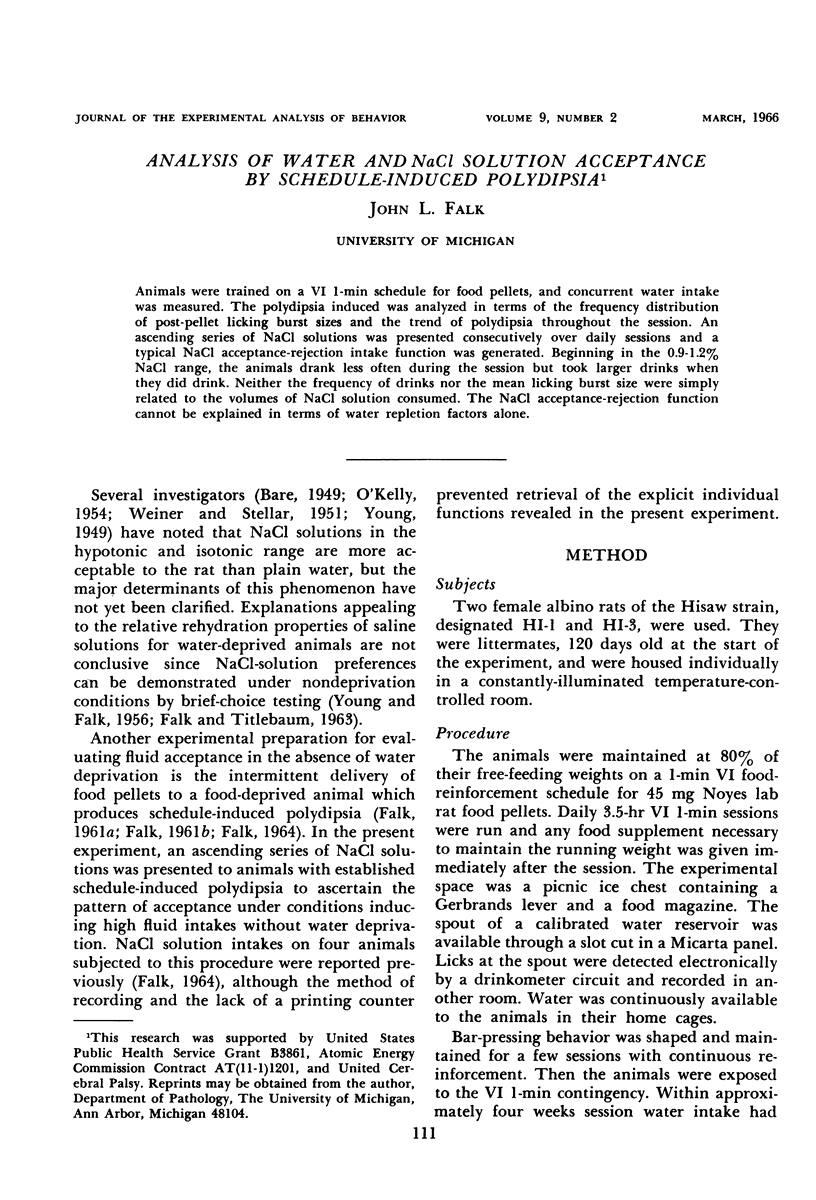
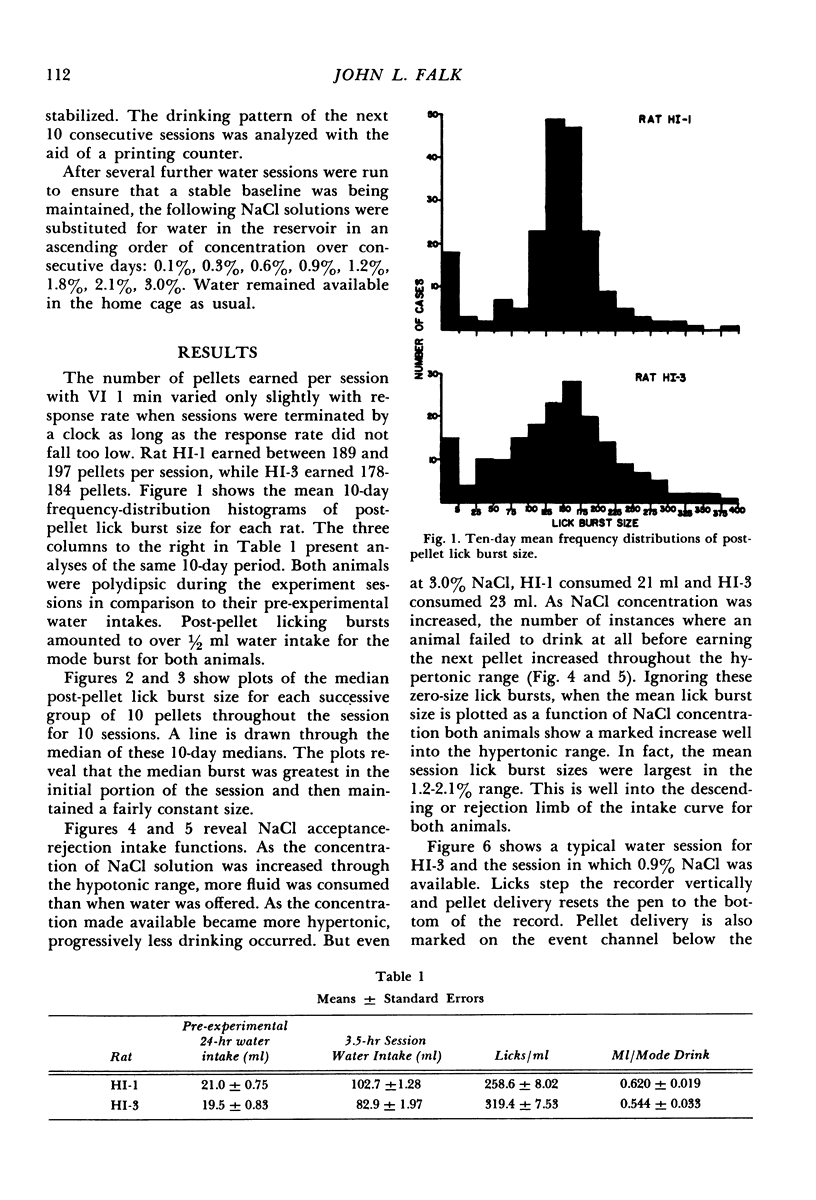
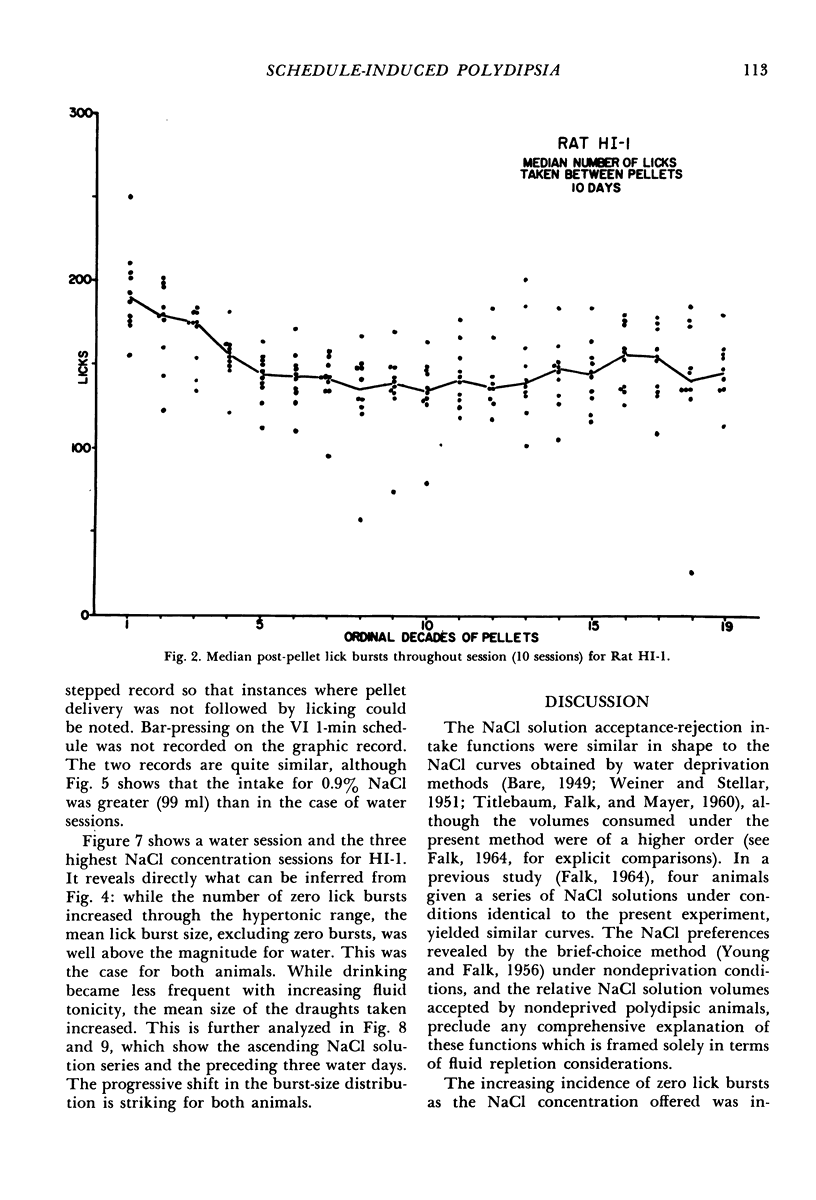
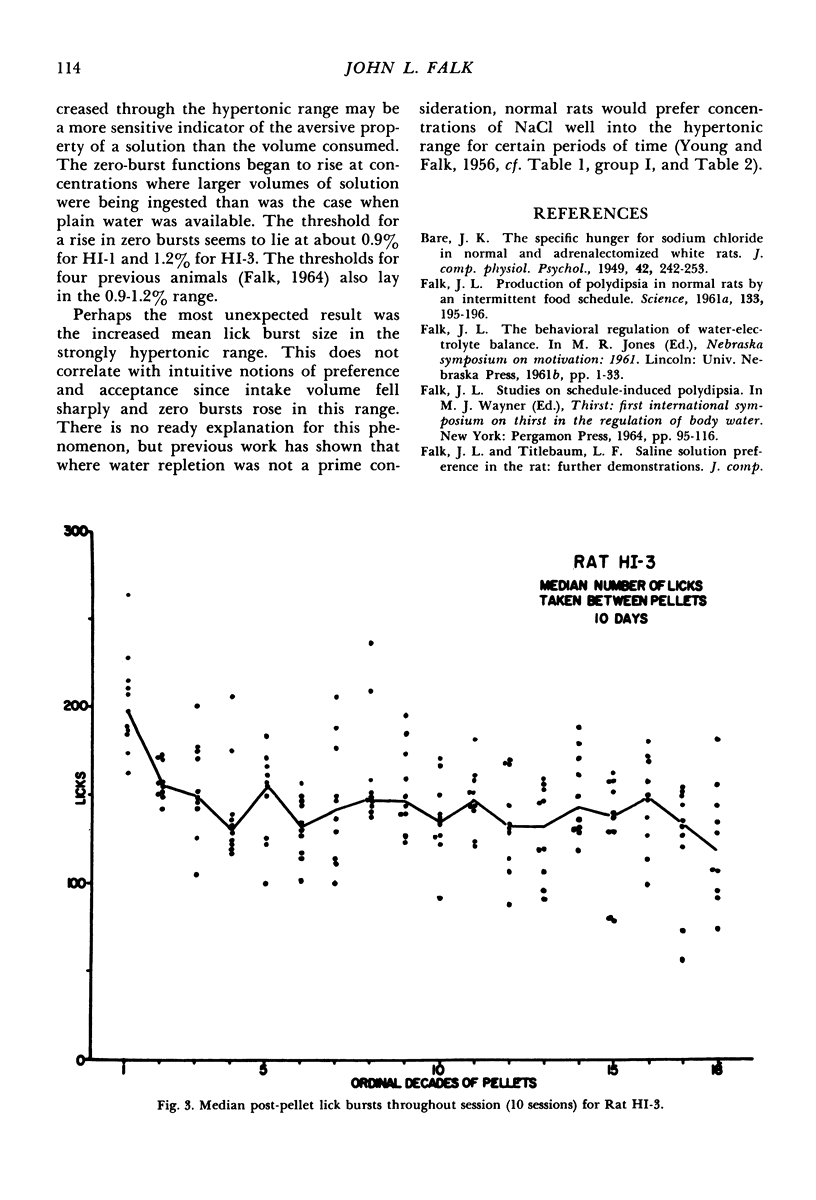
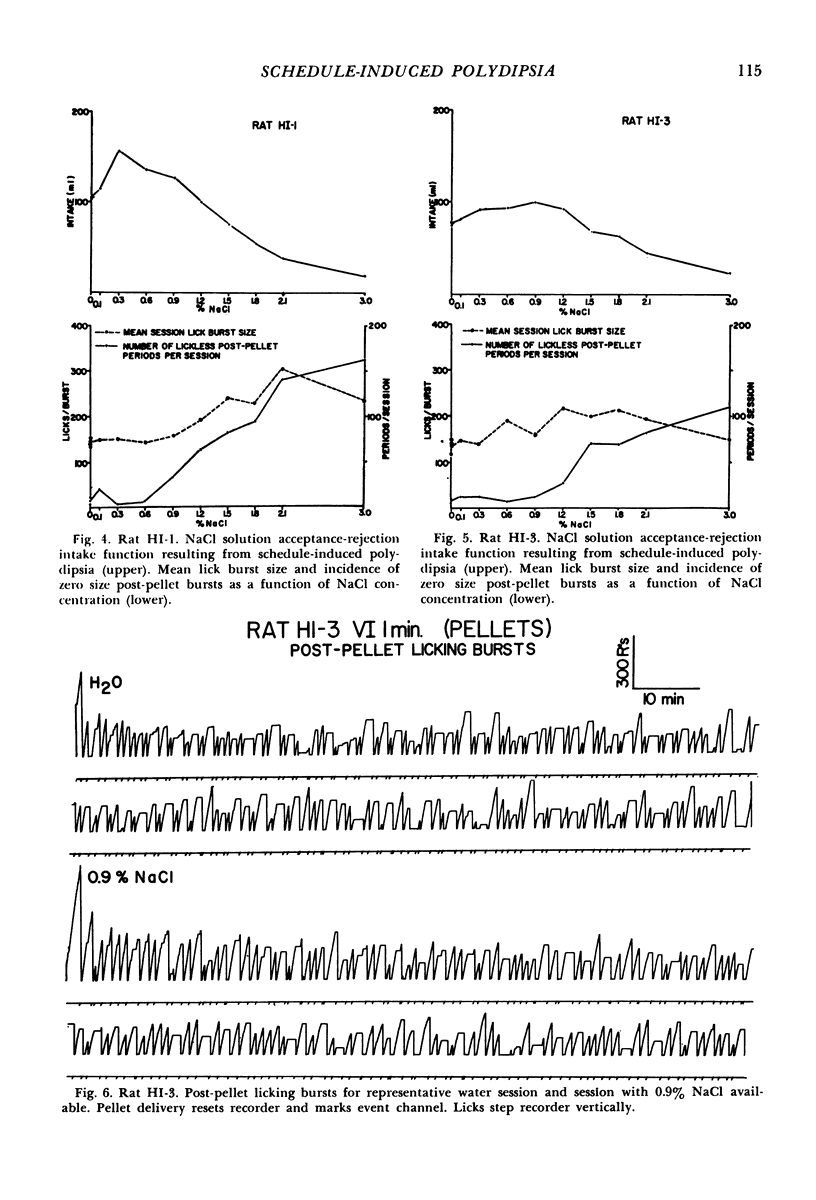
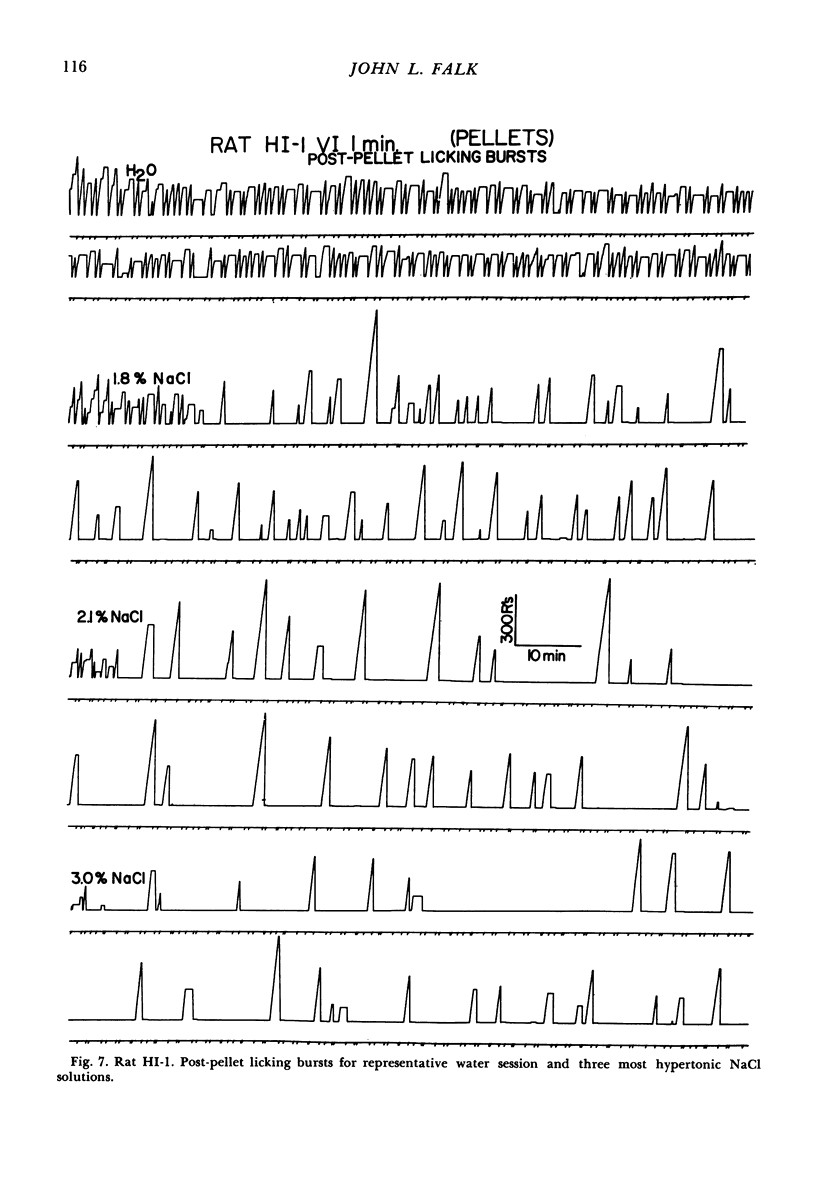
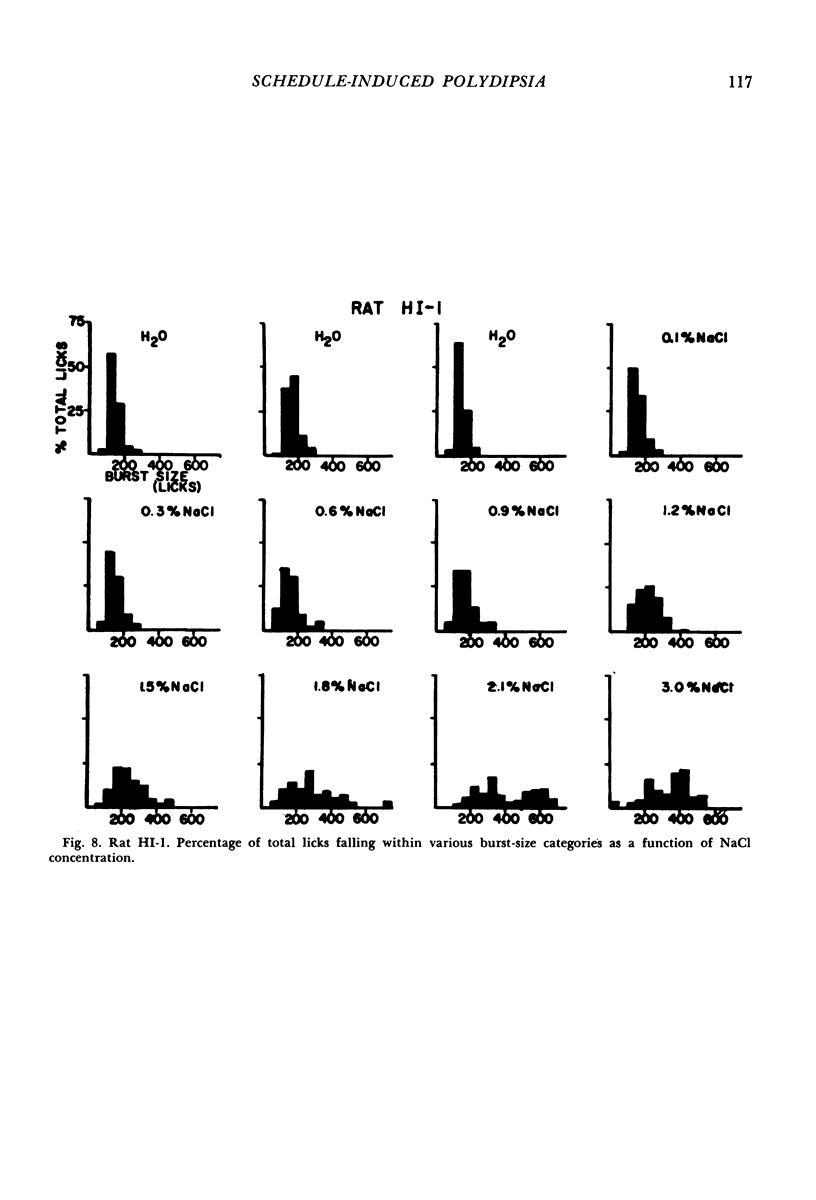
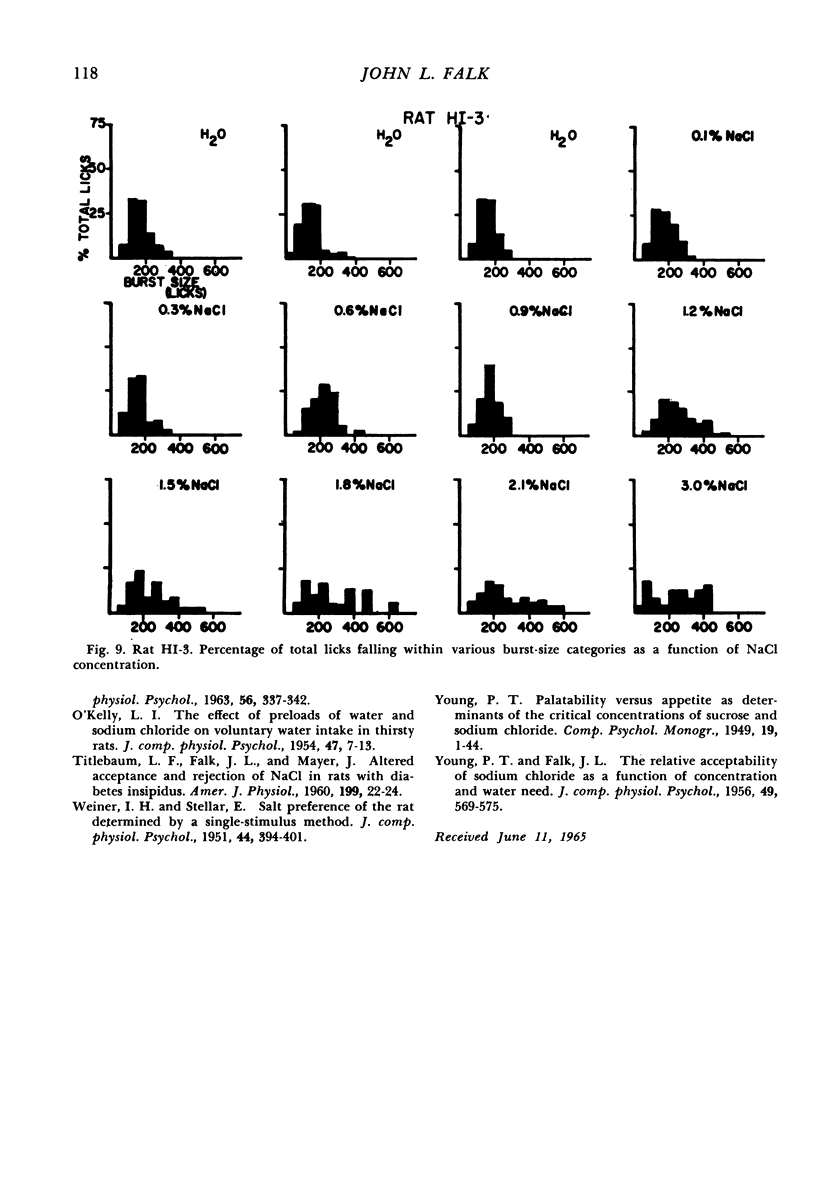
Selected References
These references are in PubMed. This may not be the complete list of references from this article.
- FALK J. L. Production of polydipsia in normal rats by an intermittent food schedule. Science. 1961 Jan 20;133(3447):195–196. doi: 10.1126/science.133.3447.195. [DOI] [PubMed] [Google Scholar]
- FALK J. L., YOUNG P. T. The relative acceptability of sodium chloride solutions as a function of concentration and water need. J Comp Physiol Psychol. 1956 Dec;49(6):569–575. doi: 10.1037/h0047744. [DOI] [PubMed] [Google Scholar]
- O'KELLY L. I. The effect of preloads of water and sodium chloride on voluntary water intake of thirsty rats. J Comp Physiol Psychol. 1954 Feb;47(1):7–13. doi: 10.1037/h0063518. [DOI] [PubMed] [Google Scholar]
- TITLEBAUM L. F., FALK J. L., MAYER J. Altered acceptance and rejection of NaCl in rats with diabetes insipidus. Am J Physiol. 1960 Jul;199:22–24. doi: 10.1152/ajplegacy.1960.199.1.22. [DOI] [PubMed] [Google Scholar]
- WEINER I. H., STELLAR E. Salt preference of the rat determined by a single-stimulus method. J Comp Physiol Psychol. 1951 Aug;44(4):394–401. doi: 10.1037/h0059237. [DOI] [PubMed] [Google Scholar]


